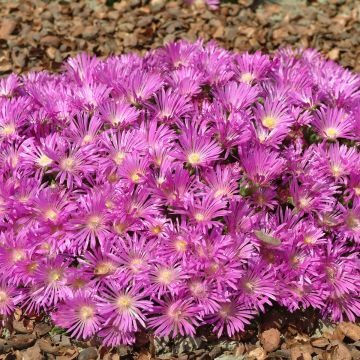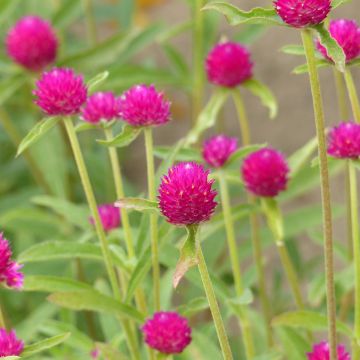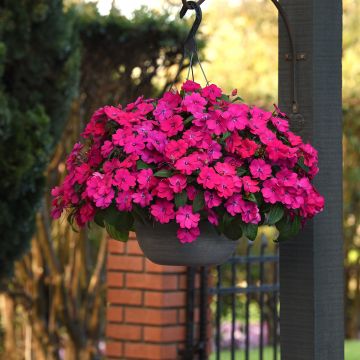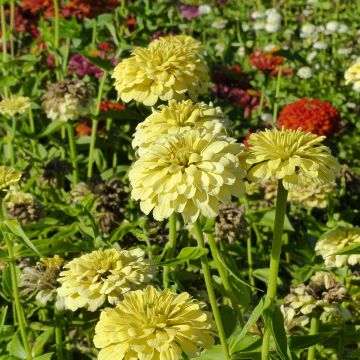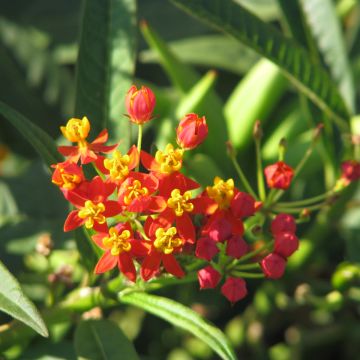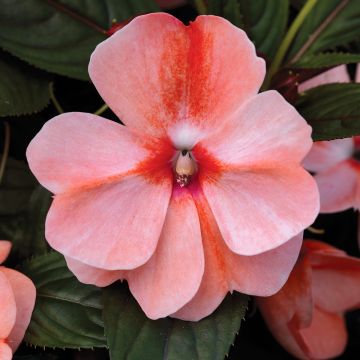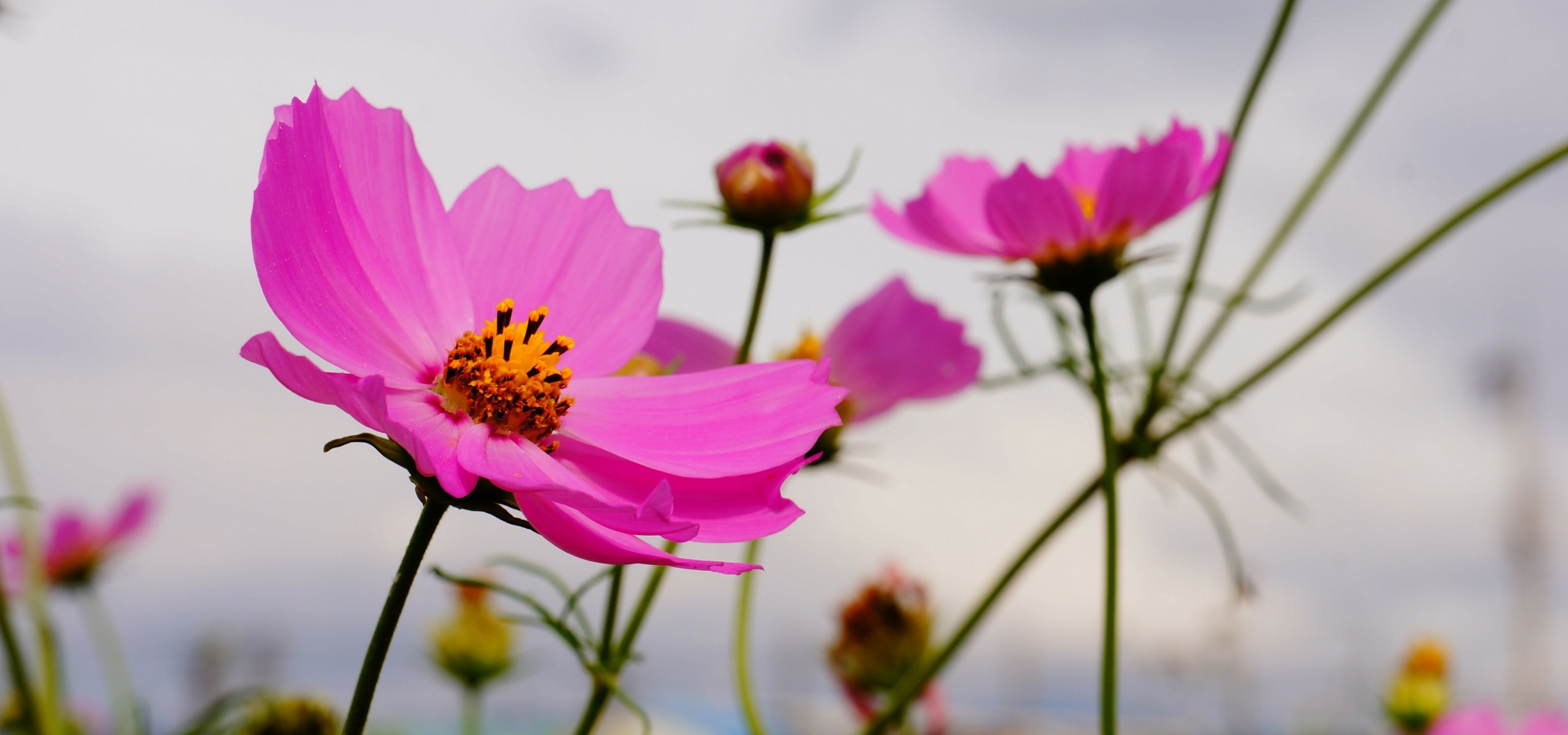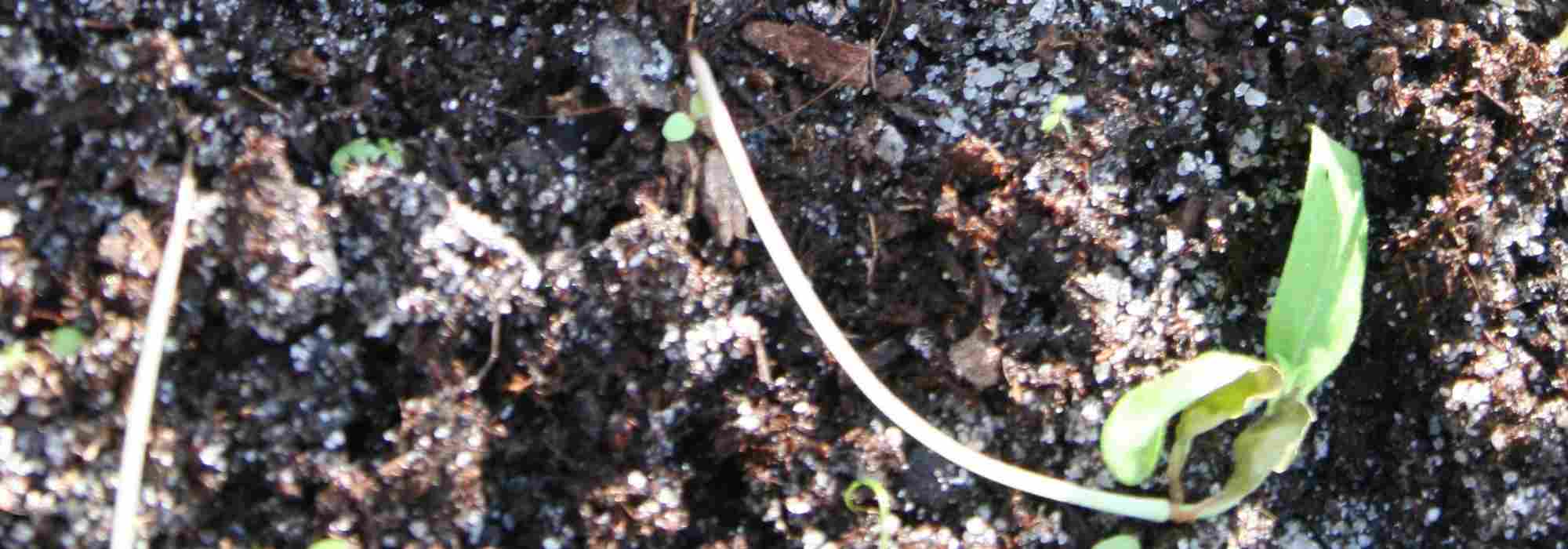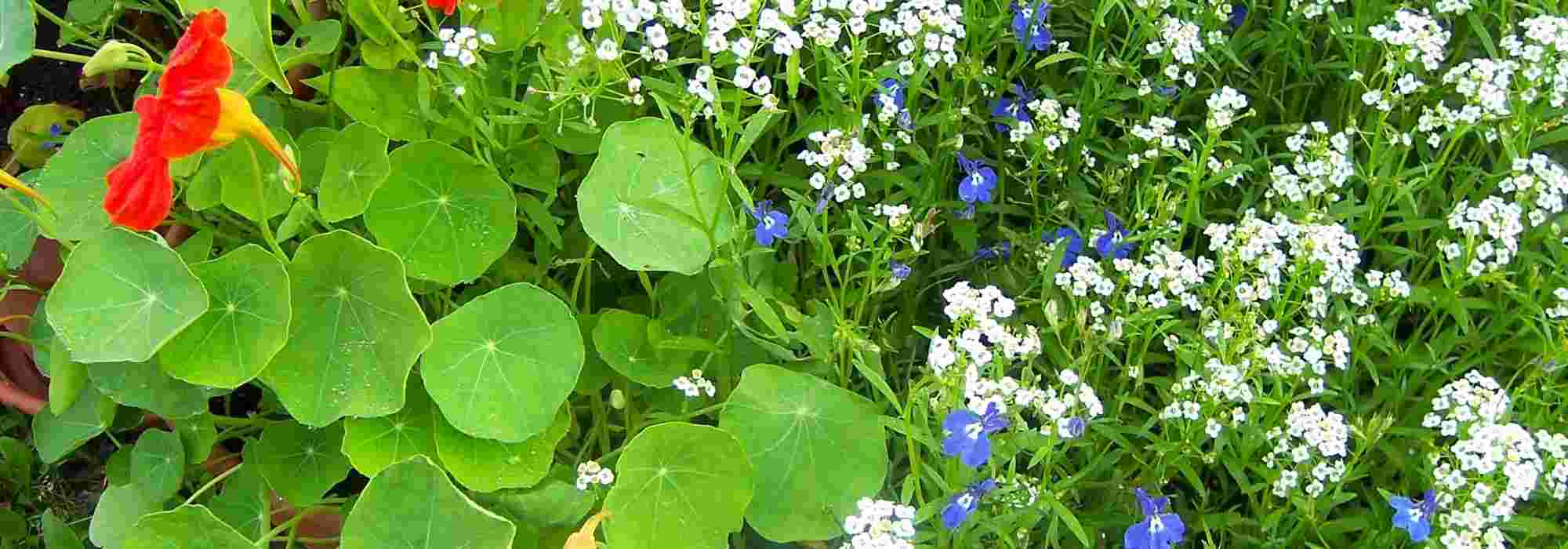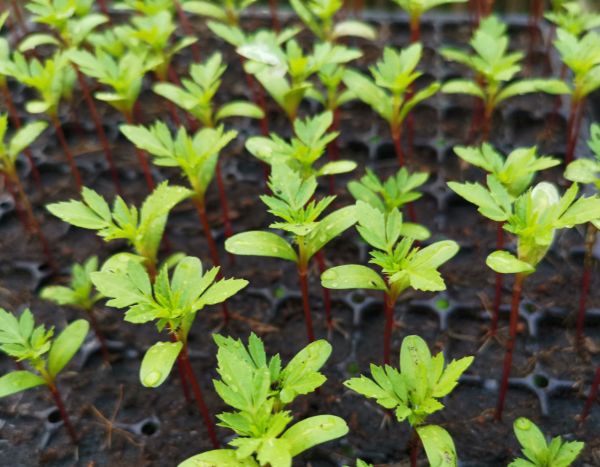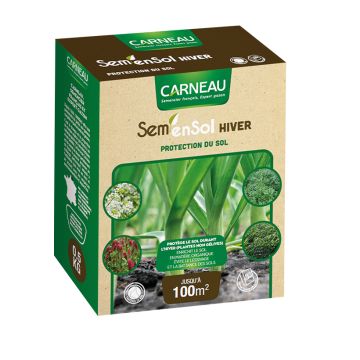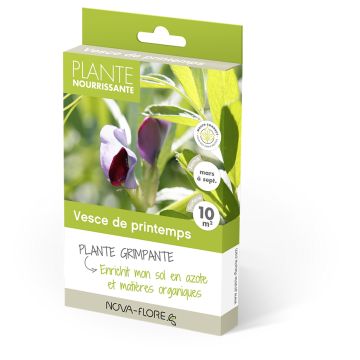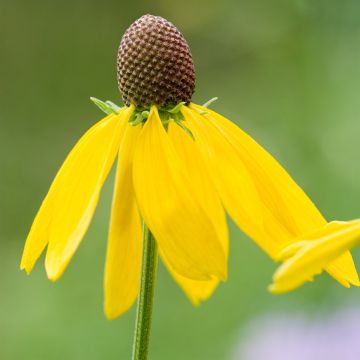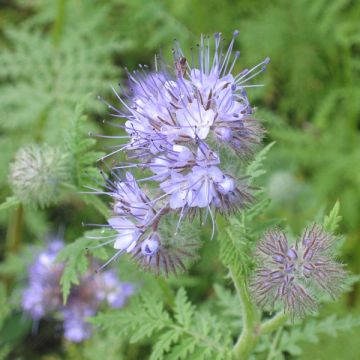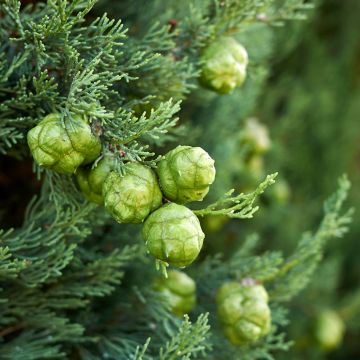

Anthriscus sylvestris seeds - Cow parsley
Anthriscus sylvestris seeds - Cow parsley
Anthriscus sylvestris
Cerfeuil des prés, Cerfeuil des bois, Anthrisque sauvage, Chérophylle sauvage, Cerfeuil d'âne, Persil sauvage
Special offer!
Receive a €20 voucher for any order over €90 (excluding delivery costs, credit notes, and plastic-free options)!
1- Add your favorite plants to your cart.
2- Once you have reached €90, confirm your order (you can even choose the delivery date!).
3- As soon as your order is shipped, you will receive an email containing your voucher code, valid for 3 months (90 days).
Your voucher is unique and can only be used once, for any order with a minimum value of €20, excluding delivery costs.
Can be combined with other current offers, non-divisible and non-refundable.
Why not try an alternative variety in stock?
View all →This plant carries a 6 months recovery warranty
More information
We guarantee the quality of our plants for a full growing cycle, and will replace at our expense any plant that fails to recover under normal climatic and planting conditions.
Would this plant suit my garden?
Set up your Plantfit profile →
Description
Anthriscus sylvestris is a widespread wild and countryside plant, commonly known as cow parsley or wild chervil. Its finely divided foliage, along with its spring to summer flowering of white umbels, looks superb in a wild or naturalistic garden. Often biennial, this native plant self-seeds abundantly and the young plants transplant without difficulty.
Anthriscus sylvestris (L.) Hoffm., commonly called cow parsley, wild chervil, or wild anthriscus, is a herbaceous plant belonging to the Apiaceae family. Its natural range extends from temperate Europe to western Asia, and it is also present in the tropical mountains of Africa. It is common in meadows, hedgerows, forest edges, and roadsides, where it usually forms dense colonies.
This species is generally considered a biennial or a short-lived perennial. It develops a rosette of basal leaves in the first year, then a flowering stem in the second year, before dying after fruiting. The plant reaches a height of 60 to 90 cm, sometimes more in rich soil, with a spread of 30 to 60 cm. Its habit is upright, its stems are hollow, finely streaked, and occasionally slightly hairy at the base. The medium to dark green foliage is finely divided and disappears in autumn.
The inflorescences, characteristic of the Apiaceae, are compound umbels of small white flowers with five petals, measuring 3 to 4 mm in diameter. Flowering occurs from April to July, depending on the climate. The flowers are mainly pollinated by insects. The root system consists of a robust taproot, which can penetrate deep into the soil. This tuberous root allows the plant to withstand periods of moderate drought and regenerate from lateral buds.
Although cow parsley is sometimes confused with toxic species such as hemlock (Conium maculatum), it has been traditionally used in some regions as a medicinal plant for its diuretic and digestive properties. However, due to the risk of confusion with dangerous plants, its use is now discouraged.
Cow parsley adapts easily to any good garden soil, even slightly heavy or chalky, as long as it does not dry out too much. It is an undemanding plant, ideal for adding a natural touch to a countryside or naturalistic scene. Its silhouette brings lightness to borders, in perfect harmony with simple perennials like columbines. In a flower meadow, it naturally accompanies love-in-a-mist, poppies, wild cornflower, Ammi visnaga 'The Giant', ornamental carrot 'Dara', or cosmos. It also pairs very well with English shrub roses, irises, or spring tulips. Its divided foliage and light umbels can also be used in bouquets, adding a rustic note.
Report an error about the product description
Flowering
Foliage
Plant habit
Botanical data
Anthriscus
sylvestris
Apiaceae
Cerfeuil des prés, Cerfeuil des bois, Anthrisque sauvage, Chérophylle sauvage, Cerfeuil d'âne, Persil sauvage
Chaerophyllum sylvestre, Anthriscus alpinus, Anthriscus candollei
Western Europe, Central Asia, West Asia
Planting and care
Sowing period for Anthriscus sylvestris: from September to February or from May to June.
Sow cow parsley seeds in trays or pots, on the surface of well-moistened seed compost. Cover the seeds with a thin layer of compost or vermiculite. Place your trays in a propagator or enclose them in transparent plastic bags and maintain the sowing at a temperature of 21°C.
Transplant the young plants when they are sufficiently developed to be handled into individual 7.5 cm diameter pots.
Cultivation:
Anthriscus sylvestris is planted in autumn or spring in any good, well-worked and well-drained garden soil, not too dry in summer. Position it in full sun or partial afternoon shade, spaced 40 cm apart in all directions. Water regularly in sunny positions during dry weather. Mulch the soil in summer to retain moisture. You can easily transplant the young seedlings as soon as they are manageable to move them to suitable locations.
Watch out for attacks from snails, slugs and caterpillars on the young shoots, as well as powdery mildew in conditions that are too hot and too dry or conversely too damp.
Sowing period
Intended location
Planting & care advice
This item has not been reviewed yet - be the first to leave a review about it.
Similar products
Haven't found what you were looking for?
Hardiness is the lowest winter temperature a plant can endure without suffering serious damage or even dying. However, hardiness is affected by location (a sheltered area, such as a patio), protection (winter cover) and soil type (hardiness is improved by well-drained soil).

Photo Sharing Terms & Conditions
In order to encourage gardeners to interact and share their experiences, Promesse de fleurs offers various media enabling content to be uploaded onto its Site - in particular via the ‘Photo sharing’ module.
The User agrees to refrain from:
- Posting any content that is illegal, prejudicial, insulting, racist, inciteful to hatred, revisionist, contrary to public decency, that infringes on privacy or on the privacy rights of third parties, in particular the publicity rights of persons and goods, intellectual property rights, or the right to privacy.
- Submitting content on behalf of a third party;
- Impersonate the identity of a third party and/or publish any personal information about a third party;
In general, the User undertakes to refrain from any unethical behaviour.
All Content (in particular text, comments, files, images, photos, videos, creative works, etc.), which may be subject to property or intellectual property rights, image or other private rights, shall remain the property of the User, subject to the limited rights granted by the terms of the licence granted by Promesse de fleurs as stated below. Users are at liberty to publish or not to publish such Content on the Site, notably via the ‘Photo Sharing’ facility, and accept that this Content shall be made public and freely accessible, notably on the Internet.
Users further acknowledge, undertake to have ,and guarantee that they hold all necessary rights and permissions to publish such material on the Site, in particular with regard to the legislation in force pertaining to any privacy, property, intellectual property, image, or contractual rights, or rights of any other nature. By publishing such Content on the Site, Users acknowledge accepting full liability as publishers of the Content within the meaning of the law, and grant Promesse de fleurs, free of charge, an inclusive, worldwide licence for the said Content for the entire duration of its publication, including all reproduction, representation, up/downloading, displaying, performing, transmission, and storage rights.
Users also grant permission for their name to be linked to the Content and accept that this link may not always be made available.
By engaging in posting material, Users consent to their Content becoming automatically accessible on the Internet, in particular on other sites and/or blogs and/or web pages of the Promesse de fleurs site, including in particular social pages and the Promesse de fleurs catalogue.
Users may secure the removal of entrusted content free of charge by issuing a simple request via our contact form.
The flowering period indicated on our website applies to countries and regions located in USDA zone 8 (France, the United Kingdom, Ireland, the Netherlands, etc.)
It will vary according to where you live:
- In zones 9 to 10 (Italy, Spain, Greece, etc.), flowering will occur about 2 to 4 weeks earlier.
- In zones 6 to 7 (Germany, Poland, Slovenia, and lower mountainous regions), flowering will be delayed by 2 to 3 weeks.
- In zone 5 (Central Europe, Scandinavia), blooming will be delayed by 3 to 5 weeks.
In temperate climates, pruning of spring-flowering shrubs (forsythia, spireas, etc.) should be done just after flowering.
Pruning of summer-flowering shrubs (Indian Lilac, Perovskia, etc.) can be done in winter or spring.
In cold regions as well as with frost-sensitive plants, avoid pruning too early when severe frosts may still occur.
The planting period indicated on our website applies to countries and regions located in USDA zone 8 (France, United Kingdom, Ireland, Netherlands).
It will vary according to where you live:
- In Mediterranean zones (Marseille, Madrid, Milan, etc.), autumn and winter are the best planting periods.
- In continental zones (Strasbourg, Munich, Vienna, etc.), delay planting by 2 to 3 weeks in spring and bring it forward by 2 to 4 weeks in autumn.
- In mountainous regions (the Alps, Pyrenees, Carpathians, etc.), it is best to plant in late spring (May-June) or late summer (August-September).
The harvesting period indicated on our website applies to countries and regions in USDA zone 8 (France, England, Ireland, the Netherlands).
In colder areas (Scandinavia, Poland, Austria...) fruit and vegetable harvests are likely to be delayed by 3-4 weeks.
In warmer areas (Italy, Spain, Greece, etc.), harvesting will probably take place earlier, depending on weather conditions.
The sowing periods indicated on our website apply to countries and regions within USDA Zone 8 (France, UK, Ireland, Netherlands).
In colder areas (Scandinavia, Poland, Austria...), delay any outdoor sowing by 3-4 weeks, or sow under glass.
In warmer climes (Italy, Spain, Greece, etc.), bring outdoor sowing forward by a few weeks.






























